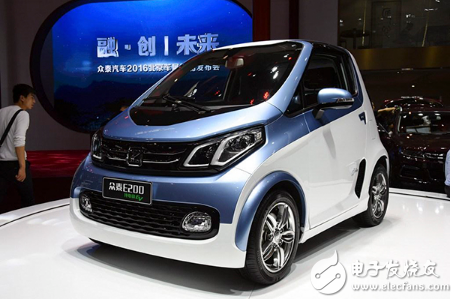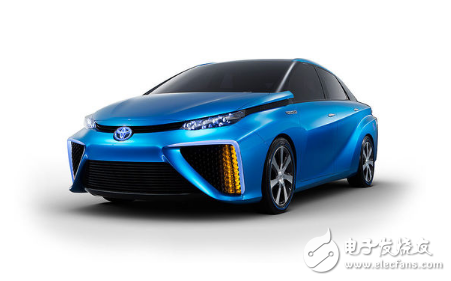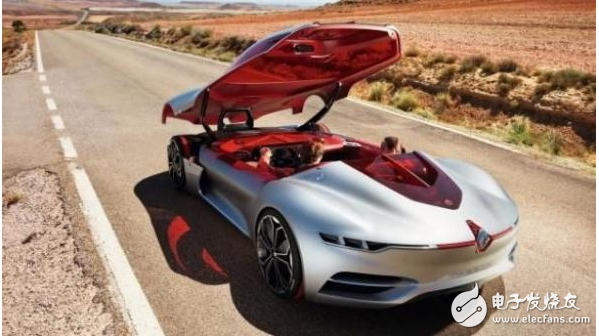At present, all countries in the world are looking for a clean and abundant energy source to alleviate the increasingly tense oil resources and improve the deteriorating environment. The cars that use such energy are the new energy vehicles that people often say. The development direction of new energy vehicles is diversified, mainly including electric vehicles, gas vehicles and hybrid vehicles. At this stage, the technology is relatively mature and the least polluting is the electric vehicle. Electric vehicles are divided into pure electric vehicles and fuel cell vehicles. And they all have their own advantages and problems that need to be solved.
Pure electric carBlade Electric Vehicles (BEV) is a kind of car that uses a single battery as the energy storage power source. It uses the battery as the energy storage power source, and supplies electric energy to the motor through the battery to drive the motor to run, thus driving the car.
A pure electric vehicle uses a single battery as a power storage source, and supplies power to the motor through the battery to drive the motor to run, thereby propelling the car forward. Its biggest advantage is that it has no pollution and low noise, which is very beneficial to environmental protection. In addition, the pure electric vehicle has a simpler structure than the internal combustion engine, has fewer running and transmission components, and has less maintenance and repair work, and can recover the energy during braking and downhill, and improve energy utilization efficiency.
In China, the first pure electric vehicle for personal sales is BYD pure electric vehicle, which is named as the forerunner of e6. The vehicle is powered by iron battery with high safety, high storage capacity and high power. The maximum driving range of charging reaches 300 kilometers, ranking first in the world. Moreover, BYD also cooperates with China Southern Power Grid to equip each car buyer with a charging cabinet. As long as the owner has his own fixed parking space, China Southern Power Grid will install the door for the owner, and the owner can complete the charging at home. This is a feasible path for the promotion of pure electric vehicles.

Although the advantages of pure electric vehicles are obvious, the current popularity is still far less than that of internal combustion engines. What it needs to solve is:
1. Reduce the price of electric vehicles. At present, the main reason for the high price of electric vehicles is that the price of the battery is expensive. On the other hand, the mass production of the electric vehicle is small, and the accessories are not formed in large-scale production;
2. Improve the driving range after one charge. At present, the stored energy per unit weight of the battery is too small, which makes the driving range of the electric vehicle too short, which also restricts the popularity of the electric vehicle to a certain extent;
3. Extend the service life of the battery. At present, after a new battery is used for one to two years, the energy stored in its fully charged battery is significantly reduced, and it is basically scrapped in three years;
4. Develop infrastructure including charging facilities. In addition to nighttime charging facilities such as work units and homes, it is necessary to establish a charging network necessary for charging on the road. In order to popularize electric vehicles, the scale and networking of basic charging facilities is an unavoidable problem;
5. Establish a relevant industry standard for the development of electric vehicles. The lack of relevant industry standards will easily lead to the ignorance of electric vehicle manufacturers, and the charging sockets and related parts of electric vehicles produced cannot be used universally, which limits the promotion of electric vehicles.
Fuel cell electric carFuel Cell Electric Vehicle (FCEV) uses hydrogen and oxygen in the air under the action of a catalyst. An electric vehicle that is driven by an electrochemical reaction in a fuel cell as a main power source. Fuel cell electric vehicles are essentially one type of pure electric vehicles. The main difference is that the working principle of power batteries is different. In general, fuel cells convert chemical energy into electrical energy through electrochemical reactions. Hydrogen is required for electrochemical reactions, and oxygen is used for oxidants. Therefore, the first developed fuel cell electric vehicles use hydrogen fuel directly. The hydrogen can be stored in the form of liquefied hydrogen, compressed hydrogen or metal hydride hydrogen storage.
The energy of a fuel cell vehicle battery is obtained by the chemical action of hydrogen and oxygen, which is directly converted into electrical energy [3]. This chemical reaction process does not produce harmful products. The biggest difference between a fuel cell vehicle and a pure electric vehicle is that the concept of two batteries is different. A pure electric vehicle uses a battery to save electricity in the battery. The fuel cell is not a battery, but a power generation device. The energy is stored in hydrogen, which causes a chemical reaction between hydrogen and oxygen to generate electricity. Compared with pure electric vehicles, hydrogen fuel cell vehicles have advantages in use. It takes at least 7-8 hours for fully charged electric vehicles to fully charge, and hydrogenation time for hydrogen fuel cell vehicles is only about 3.5 minutes, and hydrogen fuel cell vehicles once. After the filling of hydrogen, the driving range is much higher than that of pure electric vehicles. For example, Mercedes-Benz B-class hydrogen fuel vehicles have a cruising range of up to 400 kilometers when the hydrogen storage tank is full of fuel.

In China, fuel cell vehicles are one of the 12 major research projects in the country during the 10th Five-Year Plan period. During the two sessions in March 2012, Zhai Zijian, deputy director of the Ministry of Science and Technology's major project management office for electric vehicles, believes that after 5 to 10 years, fuel cell vehicles will enter the commercial sales stage through demonstration operations like the electric vehicles of the past two years. But for now, fuel cell vehicles still have the following technical problems:
1. The source of hydrogen, storage, and reformer for converting fuel (oil, natural gas, coal, methanol, and other non-petroleum-based fuels) to hydrogen have not been solved, which has led to high operating costs for hydrogen fuel cell vehicles. . From the current fuel cell concept car that is manufactured by major auto companies and costing millions of dollars, if the cost cannot be greatly reduced, the promotion of fuel cell vehicles is still beyond reach;
2. The supporting facilities are extremely imperfect. The infrastructure such as hydrogen refueling station is almost zero. At present, there are less than 100 hydrogen refueling stations in the world, and they are still in an experimental stage, which seriously affects the popularity of hydrogen fuel cell vehicles;
3. The technical standards for fuel cell vehicles and key components are seriously lacking, which makes the industrialization of fuel cells severely constrained. Some experts have analyzed that to solve the above problems, optimistic estimates take 10 to 20 years. However, once the above problems are effectively resolved, the industrialization of fuel cell vehicles will be greatly accelerated.
At present, the state has increased support for the research and development of electric vehicles and fuel cell vehicles, and has increased the construction of related supporting infrastructure. At the same time, it has also introduced some preferential measures to encourage enterprises and individuals to purchase new energy vehicles. I believe that in the near future, new energy vehicles will be popularized and promoted.

Linear Analog Multipliers Dividers
Linear Analog Multipliers Dividers,Integrated Circuits Analog Multipliers Dividers,Ics Analog Multipliers Dividers Linear,Ic Linear Analog Multiplier Divider
Shenzhen Kaixuanye Technology Co., Ltd. , https://www.icoilne.com
